Are you in search of a couch potato companion to binge-watch shows with you all day long?
Do you need a large teddy bear to snuggle with at night?
The saint berdoodle might just be the perfect dog for you. These delightful mixes are the perfect cuddle buddy, guard dog, and baby-sitter all packaged into one.
This pup makes the perfect addition to any type of household.
TABLE OF CONTENTS
What is a Saint Berdoodle?
The saint berdoodle is a lover, not a fighter.
These gentle pups are the result of mixing the courageous Saint Bernard and the graceful poodle.
Whilst they can be used as working dogs, they are generally kept as loving companions.
Saint Berdoodles are friendly dogs that want nothing more than your undivided love and attention. These cuddly dogs will eagerly climb into your lap and happily settle in for a movie night with the entire family.
They will always be around people.
These calm and easy-going pups are rather lazy and very easy to care for – first time owners would find taking care of one of these beautiful dogs a breeze.
- Overview: Hybrid (Saint Bernard/Poodle).
- Purpose: Companion.
- Weight: 110-200 pounds.
- Size: 24-30 inches.
- Temperament: Easy-going, Lazy and Affectionate.
Saint Berdoodle Appearance
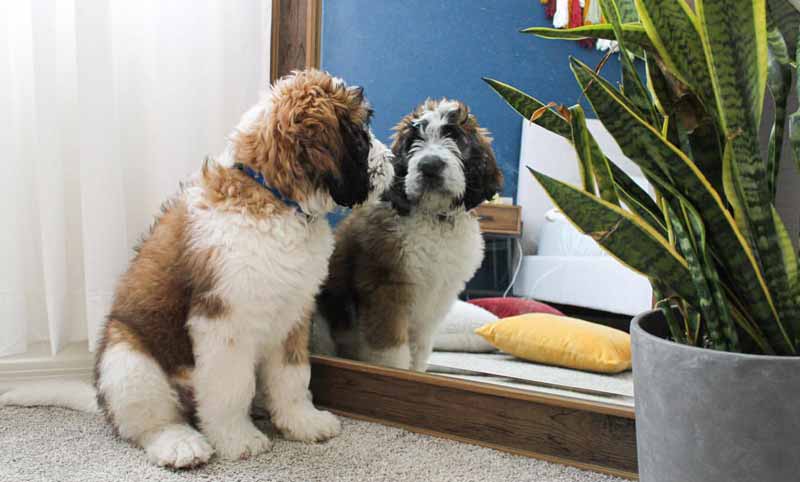
From Adobe Stock
This mixed breed is gorgeous and looks more like a stuffed animal than an actual dog.
These dogs are one of the fluffiest breeds around and look more like an adorable teddy bear than a dog.
Their floppy ears and warm, brown eyes make them undeniably cute. They will melt your heart in an instant.
Although St Berdoodles usually keep the face of a Saint Bernard, they do not inherit the hanging jowls or sagging eyes that most Saint Bernards have. This makes them very desirable to dog lovers who want to adopt a Saint Bernard but do not want the excessive drooling and eye infections that are common of this breed.
Despite their plush fur, they are quite muscular and can pack a lot of strength into their huge bodies.
Height and Weight
These giants can weigh anywhere from 100 to 200 pounds and stand 24-30 inches in height.
Pups that inherit more of the Saint Bernard genes will be heavier.
Sadly these pups are often returned to their breeders because owners do not realize just how big they get.
It is important to know just how big they will get and to make sure your home is large enough to accommodate them.
Breed Colors and Coat
There is not a lot of variety in color – their coats usually only contain 4 colors (white, black, brown and red).
Most coats are only two colors with the most common color combinations being:
- White and brown.
- White and black.
- White and red.
Saint Bernard Poodle puppies are often darker when they are born – their fur lightens over time.
Their coat texture and length will vary depending on which parent breed they take after. These pups may inherit the tight, stringy curls of their Poodle parent or they might have the thick, long fur that most Saint Bernards have.
Because of their poodle genes these dogs will not shed much!
6 Fun Facts About The St Berdoodle
- This has many nicknames including: The Saint Berdoodle and The Saint Berpoo.
- Because of their parents this breed is often used for service or therapy purposes.
- Usually these dogs are created by breeding a Standard Poodle with a Saint Bernard. Miniature Toy Poodle are too small to breed with a Saint Bernard.
- This mix does not know how big they are. These giants will always want to climb into your lap, so be prepared to constantly be buried in 170 lbs of fur!
- Unlike purebred Saint Bernards, Saint Berdoodles rarely drool because their Poodle genetics prevent that undesirable trait.
- You can now find mini Saint Berdoodles. They are created by mixing a Miniature Poodle with a Saint Bernard and a Cocker Spaniel.
Saint Berdoodle Personality and Temperament

From Adobe Stock
Although these dogs may be an intimidating size, their teddy bear appearance and sweet nature makes them anything but scary. Saint Berdoodles will eagerly seek out friends (both humans and other animals) and get along with everyone they meet.
They are one of the most loving and affectionate breeds you will ever find.
These giant teddies want nothing more than to cuddle up on the couch with their favorite humans.
With lots of love and attention your Saint Berdoodle will become loyal to you for life.
Because of the strong bonds they form with their family members, these gentle giants can develop separation anxiety if left alone for too long. These pups always want to be right alongside their humans and can get stressed if they are left at home by themselves.
Even though these dogs may be big love-bugs, they do have protective instincts.
These dogs love their family more than anything and will do whatever it takes to keep them safe.
Unlike typical guard dog they simply keep a watchful eye over their surroundings and will calmly protect their loved ones from any potential danger.
You will rarely ever hear these pups bark.
Because of how calm these dogs are they are not overly playful and energetic. These lazy dogs would rather take a long nap with you during the day than go for a strenuous run. Their energy comes in short bursts throughout the day and can easily be expelled with a short walk or quick play session.
Despite having fairly low energy levels throughout the day, these dogs inherit the curious nature of the Saint Bernard and may get into a bit of mischief if they are not exercised.
So make sure they receive at least a little bit of exercise each day.
Is The Saint Berdoodle A Good Family Dog?
A Saint Berdoodle is a perfect family dog.
This hybrid inherits the natural nanny instincts of the Saint Bernard so they will loyally watch over your children at all times – as well as provide them with cuddles whenever they are needed!
Caring for a Saint Berdoodle
Although their size might be a bit intimidating, Saint Berdoodles are an extremely low-maintenance breed and do not need much beyond lots of love and attention.
These pups do not need much exercise, are easy to groom and are fairly healthy overall.
Throughout the day they will often get bursts of energy and will want to play or run however they will need a nap soon after to recover.
The only thing to note is that you will spend a lot of money on food as these dogs need to eat a lot to fill their big stomachs!
Exercise Requirements
Saint Bernard Poodle mixes prefer to be couch potatoes.
Just 1-2 short walks each day will tire these giants out.
Avoid taking them for long, strenuous walks because they may become exhausted. If you are looking for a dog to take hiking or running each day, this is not the breed for you.
Because of their strength, it is important that you train your pooch to walk nicely on a leash from a young age. If you wait until they are out of their puppy stage, your giant Saint Berdoodle will drag you along on your walks.
Although they may prefer naps over chasing a ball around the yard, Saint Bernard Poodles still have a playful side to them. They will chase you around the backyard, go for a short swim and will play fetch in the yard.
- Number of Walks Per Day: 1-2.
- Total Exercise Needed Per Day: 30-45 Minutes.
Grooming and Shedding
Grooming your Saint Bernard Poodle mix will depend on what their coat texture is like. If your pup has the dense fur of a Saint Bernard, you will probably want to brush them 1-2 times each week.
If your Saint Berdoodle inherits the tight curls of the Poodle you will need to make frequent visits to the groomer.
These giant protectors are prone to dry skin and irritation so only bathe them once a month at most. If you wash your dog too much their skin will dry out and you will notice redness, itching and even eczema.
Because of their long, floppy ears, you will want to pay extra attention to their ear hygiene. Clean out their ears once a week to prevent infections.
Feeding and Diet
Just by looking at their size it is no real surprise that these dogs have gigantic appetites.
They need lots of food to support their big bodies.
Typically they need 4-5 cups of food each day spaced out over two meals.
Their weight plays a big factor in determining how much food they need. If they are on the smaller side they may only need 3.5 cups, but if they are much larger they need up to 6 cups of food each day.
Your veterinarian can help you figure out what the optimal amount of food for your dog is based on their weight, age and activity level.
Saint Berdoodles should be fed a diet that is formulated for large dog breeds and is high in calories.
| Calories Per Day: | Cups of Kibble Per Day: |
|---|---|
| 1400-1750 | 4-5 |
Known Health Problems
These dogs can develop a few health issues because of their size.
Hip dysplasia and Wobbler’s Syndrome are two of the most common culprits.
Ear infections, bloat, Willebrand disease and heart conditions are all potential issues that a Saint Berdoodle may develop.
However, this breed rarely suffers from major health concerns and overall is a very healthy breed.
If you’re like most dog parents (or parents-to-be), you care for your pet immensely. Having pet insurance could save you from the headaches of going to the vets with reimbursement for every vet bill from now on!
How Long Does A Saint Berdoodle Live?
Like most larger breeds they do not have long lifespans (8 to 12 years).
How Much Does A Saint Berdoodle Cost?
The Saint Berdoodle come with a shockingly high price tag, $1000-$2000 if you are purchasing one from a breeder.
How To Train A St Berdoodle

From Adobe Stock
Luckily this mix comes from two very intelligent breeds which makes dog training easy.
These big pups know that if they please their owners, they will receive lots of praise. So they are highly motivated to perform whatever task you ask of them.
Because these pups love to please positive reinforcement is the best strategy and you can reward them with either treats or lots of love and affection. Because of their high intelligence these dogs want to be challenged and can become bored if they are not challenged.
Test their search and rescue skills by playing hide-and-seek around the house. Teach them how to perform tasks for you like turning the lights on and off, fetching the tv remote, or even baby-sitting your children.
These dogs love to help out and will happily do anything to make your life easier (as long as it results in lots of praise and treats).
Just like any dog breed, socialization is important but thankfully these pups have a naturally sweet disposition. They quickly warm up to anyone they meet and even get along well with other animals.
Occasionally these dogs can get mouthy but this can be quickly trained out at an early age.
Buyer’s Guide
| Pros | Cons |
| Affectionate and very loving. | Not suitable for apartment life. |
| Low exercise requirements. | Can be very expensive. |
| High intelligence makes them easy to train. | Develop separation anxiety when left alone. |
| Have very few health issues. | May be mouthy if not properly trained. |
| Protective but in a gentle and quiet manner. |
Quick Breed Summary Table
| Breed Characteristics | |
| Size: | 24-30 inches |
| Weight: | 110-200lb |
| Lifespan: | 8-12 years |
| Coat: | Either dense and long or wiry and curled |
| Color: | Mixture of black, white, brown, or red |
| Do They Shed: | Moderately |
| Temperament: | Easy going, affectionate and calm |
| Intelligence: | High |
| Socialization: | Very friendly with people and other animals |
| Destructive Behavior: | Will chew if left home alone for too long |
| People Skills: | Loves people of all ages and is very kind to strangers |
| Good with Children: | Very good with children |
| Activity Levels: | Gets tired easily |
Summary
The Saint Berdoodle’s loving temperament means they will fit well into any family.
They love children, adults, and other animals so anyone with the space to house such a large dog, could happily adopt a Saint Bernard Poodle mix.
This loveable giant makes a great choice for first-time owners because they are very low maintenance and easy to care for.
If you are willing to let them snuggle with you on the couch they won’t ask for much else.
Just know that if you bring one of these giants into your home, expect to receive a lot of love.
More Saint Bernard and Poodle Mixes
Want a Saint Bernard mix or Poodle mix but aren’t keen on the Saint Berdoodle? Check out these other hybrid dog breeds:





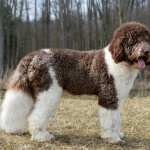



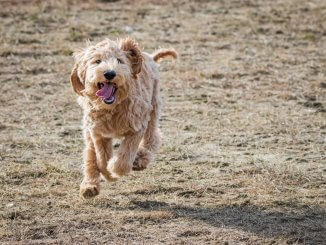
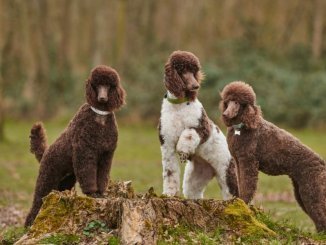

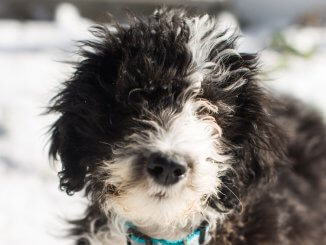

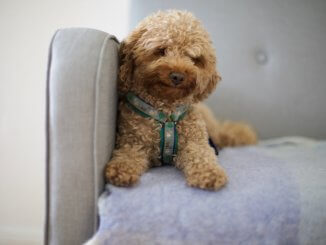
Is leaving a Saint Berdoodle on their own for 5 hours a day too long? I’ve read they get separation anxiety
I was wondering were and how do you find st brenard doddle
Where did you find these pictures? I’m 99.9% sure that most of them are pictures of Landseers aka Newfoundlands.
How do I find one?! I’m looking for 3/4 standard poodle & 1/4 Saint Bernard.
Any information about finding an F1 Saint berdoodle breeder in the UK is very much welcome. Spent hours online researching and haven’t found any as of yet.